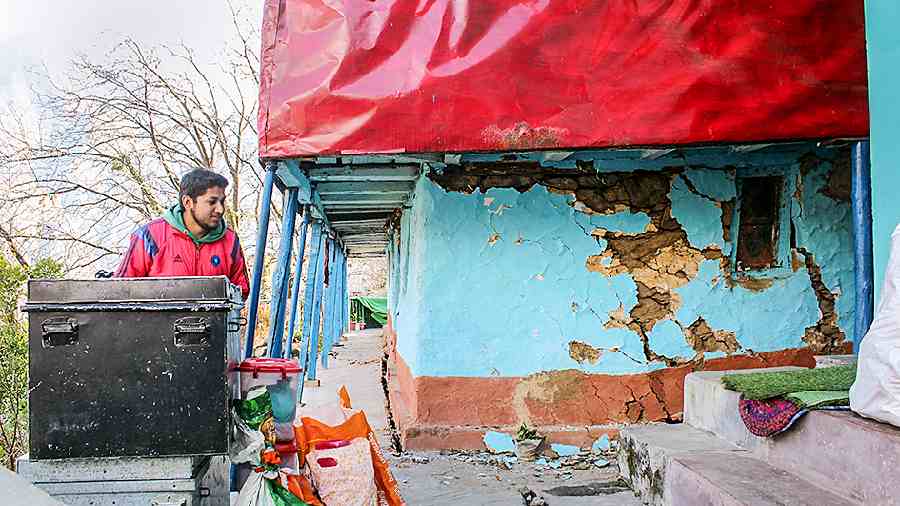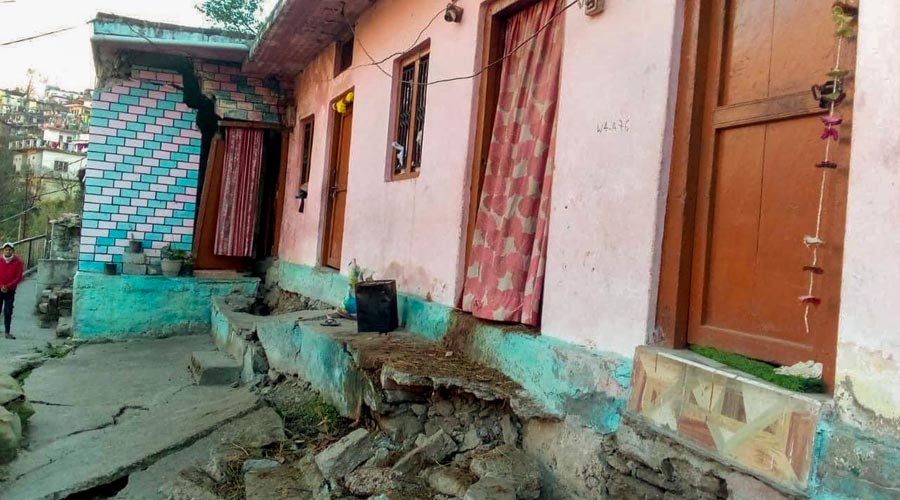The National Disaster Management Authority (NDMA) has directed scientific institutions across India to refrain from sharing any data on the sinking of the ground in Joshimath with the media, or on social media, until it releases a final report.
The NDMA’s order to the National Remote Sensing Centre (NRSC), Hyderabad, and other scientific institutions has prompted some scientists and Opposition parties to accuse the Centre of trying to gag the scientific institutions monitoring the Joshimath crisis.
The “office memorandum” from the NDMA — an arm of the Union home ministry — emerged on Friday, after the NRSC released on its website a preliminary report with satellite images indicating a rapid sinking of the ground by 5.4cm in Joshimath between December 27 and January 8.
The images, tagged with brief remarks by the NRSC — an institution under the Indian Space Research Organisation (Isro) — and shared by some Twitter users on Friday, were not visible on the NRSC website on Saturday.
“It is observed that various government institutions are releasing data related to the subject matter (ground subsidence in Joshimath) on social media… and interacting with the media with their own interpretation of the situation,” the NDMA said in the office memorandum.
This is “creating confusion” among affected residents and other citizens, it said, adding that the issue had been highlighted during a meeting chaired by the Union home minister on January 12 and again discussed during a meeting chaired by the NDMA member secretary on Friday.
The order has evoked sharp responses from Opposition leaders and scientists, some of whom view the NDMA move as part of efforts to control the narrative over Joshimath, a central Himalayan town that, scientists had warned decades ago, was sinking.
Jairam Ramesh, general secretary in charge of communications in the Congress, tweeted: “They make one Constitutional institution attack another. National Disaster Management Authority tells ISRO to shut up…. This is New India where only one man knows everything and will decide who will speak on anything.”

Cracks criss-cross a house in Joshimath. PTI
Uttarakhand-based geologist S.P. Sati is among those who have questioned the purpose of the NDMA order.
Even if the NRSC removes the satellite imagery, similar information will be available from other space agencies, Sati told a television channel.
A scientist from a central academic institution who requested not to be named told this newspaper: “This is a classic case of objectivity drowned by political convenience and a denial of accountability.”
Priyanka Chaturvedi, a Shiv Sena leader, tweeted: “This is literally a gag order to not let the country know what’s happening in Joshimath, only what the government wants you to know.”
The NDMA order has also gone to the Wadia Institute of Himalayan Geology (WIHG) and the Uttarakhand Disaster Management Authority (UDMA), all in Dehradun, whose scientists are familiar with Joshimath’s geology and have been trying to understand the current accelerated sinking.
Scientists with the UDMA had told this newspaper earlier this week that Joshimath’s vulnerability to accelerated sinking had been known since the mid-1970s and that unchecked construction, population growth, and tourism would have contributed to the current crisis.
The NRSC’s preliminary report noted a slow subsidence of 9cm over a seven-month period from April to November 2022, and then a rapid subsidence of 5.4cm over a 12-day period from December 27 to January 8, but confined to the central part of Joshimath town.











